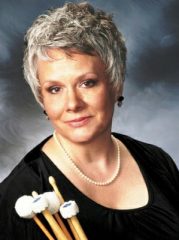Students in the music and anthropology departments will benefit from more than $3 million in capital projects approved for the University of Wisconsin Oshkosh.
Renovations at UW Oshkosh were approved in February by the UW System Board of Regents and State Building Commission. Work is set to begin in late June, with a completion date in December, according to a timeline provided by JoAnn Rife, executive director of facilities management at UWO. Fixtures, furniture and equipment will be installed in time for 2022 spring classes.
Music practice rooms
State-of the-art improvements, including better sound isolation, are planned for the music practice rooms.
The project follows National Association of Schools of Music (NASM) acoustical standards. The overall number of practice rooms will be reduced, with room proportions and finishes to be constructed to enhance the acoustic environment within the rooms. The practice room ceilings and walls will isolate sound transfer between rooms.
A review of the music facilities was done in fall 2017 and renovations will implement the architect’s recommendations.

Alison Shaw
“The department is very excited about this upgrade,” said Alison Shaw, music department chair. “Facilities management is working with Mayer/Helminiak Architects, along with Talaske Acoustic Consultants. The rooms will be more spacious and attractive and the mitigation of dangerous decibel levels is structured into the architecture. State-of-the-art doors to each room will eliminate sound bleed into the hallway, and the instrumental and choral rehearsal rooms where our band and choirs rehearse will receive attractive new entryways.”
Shaw said it will be a dramatic facelift for the entire lower level of the music area in the Arts and Communications Center.
“When we are able to once again host on-campus events, such as the Wisconsin State Music Educators Association Solo and Ensemble Festival, student musicians and their teachers will not only be the benefactors of these improved facilities, but they will also see firsthand the commitment that the University has to music and the arts and enhancing success for those students.”
 Anthropology spaces
Anthropology spaces
Renovation is planned in Swart Hall to provide increased classroom and lab space for the anthropology program.
In addition to space reconfiguration, the project includes mechanical, electrical and technology updates and new furniture that supports interactive group learning. The space is used to teach methods and analytical techniques of forensic anthropology.
Jordan Karsten, associate professor in the department of anthropology, global religions and cultures, said topics covered include the stages of soft tissue decomposition, estimation of the post-mortem interval, forensic entomology, the use of skeletal elements to estimate demographic information, forensic odontology, skeletal trauma and cause of death determination.
Students analyze simulated forensic cases, using real human skeletons and learn to construct case reports for law enforcement agencies. Space outside the classroom provides a location for crime scene mockup to provide the students with hands-on experience in a simulated setting.

Jordan Karsten
Karsten said the dedicated space will help when forensic anthropology assistance is provided to authorities around the state.
Stephanie de Montigny, department chair, said anthropology is a wide-ranging field that includes cultural anthropology, biological anthropology, archeology, and linguistic anthropology, with majors and minors getting a broad education in the subdisciplines.
“The new forensic anthropology lab will take pressure off our already at-capacity labs and classroom space, allowing all our subfields to flourish,” she said. “Our classes and field experiences that use these lab spaces allow hands-on training and experience that would serve students in a wide range of majors, including criminal justice, environmental studies, history, women’s and gender studies and psychology. In the future, we would like to add a dedicated exhibit space for students to gain hands-on experience related to the interdisciplinary area of museum studies.”
Learn more:
